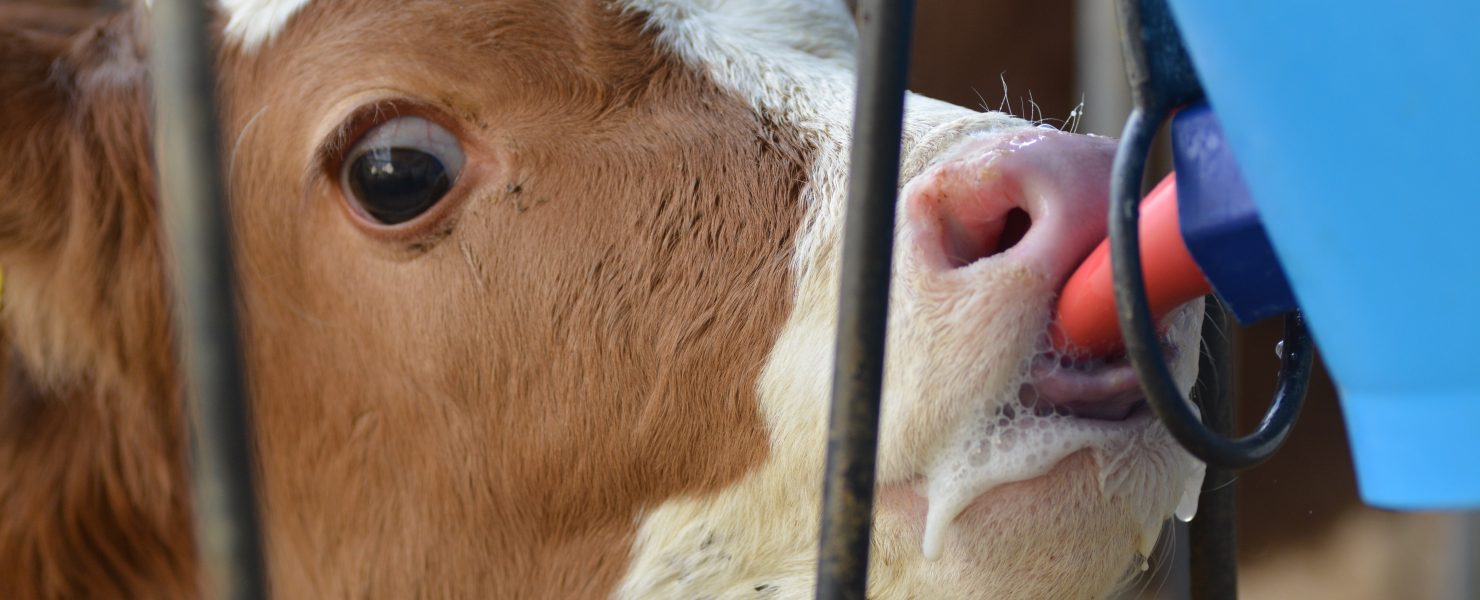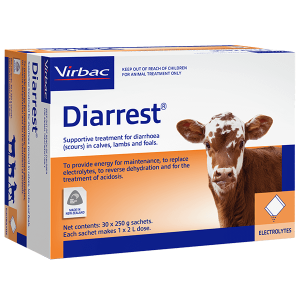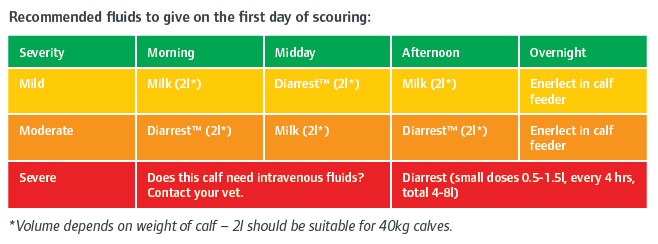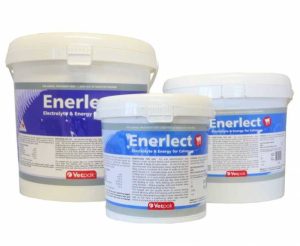
Calf scours in New Zealand is commonly caused by any of the following: rotavirus, cryptosporidium, E.coli, coronavirus, salmonella and coccidiosis. As well as infectious causes of scours (diarrhoea), nutritional scours (as a result of various stresses, milk type changes) can also be pretty severe. Regardless of the cause, it is the ensuing dehydration that results in production loss and, in severe cases, death. Treating calf scours with fluid therapy is essential.
When a calf scours for 24 hours, it can lose around 5-10% of its bodyweight in fluid. Alongside the dehydration, the calf’s blood becomes acidotic, low in sodium and potassium, and hypoglycaemic. Correcting these losses is really important.
Calf demeanour is probably the most important thing to look at. If the calf is off feed and does not have a strong suck reflex, something is not right. When you pinch the skin on the neck, it should flatten quickly within 2 seconds (try this on a healthy calf). Where it takes longer to flatten (up to 6 seconds) the calf can be 8% dehydrated, and anything longer than this indicates very severe dehydration. Sunken eyes, dry gums and fast respiratory rates are also suggestive of more severe dehydration.
Where calves can still stand and suck, oral rehydration via calf drinker is recommended, while for those that are still standing but no longer have a suck, then oral fluids can be tubed. But once calves are severely dehydrated and recumbent, intravenous fluids are preferred along with oral fluids to maximise the chances of recovery.
There are many different types of electrolytes out there with varying make-ups. Dehydrated calves not only require water to make them better, but they also need the sodium, potassium and chloride replaced. They require energy for a good immune system, and they need that acid-base balance corrected for normal body function.
Vetlife’s ‘gold standard’ product for scouring calves is Diarrest™, which contains four energy sources, whereas many other electrolyte products only contain two. The glucose helps the sodium and potassium to get absorbed in the gut, and this is key to enabling the calf to absorb the water provided and reverse the dehydration. The other energy sources help the calf meet its own energy requirements, which is also a vital stage in recovery and growth. The bicarbonate, citrate and butyrate in this product help reverse the metabolic acidosis. To speed recovery, it is vital that a premium electrolyte product is chosen for sick calves. Diarrest™ has been carefully formulated to achieve excellent results, and to maximise your success it is important to follow a few rules when dispensing it.

Firstly, alongside the electrolytes, ensure milk is still fed to scouring calves, as they require the higher energy it provides. See the table below for examples. Secondly, mix electrolytes with warm water, because cold water results in a calf using even more energy to keep warm. Finally, even if the packet say it is ok, it is better not to add electrolytes to milk – calves still require lots of fluid, and by mixing with milk, you are probably reducing their total intake. Below is an example of a fluid plan for sick calves in your shed:

Enerlect™ is a basic electrolyte solution that we do not recommend to tube to individuals with clinical scours because it lacks energy. It is, however, an excellent product to make up in the evening and leave in the calf feeder overnight so that all calves in the pen can access electrolyte solution all night long.

Finally, if you do struggle with scouring calves this season, please do not hesitate to contact your veterinarian early on, so that we can then help you maximise your animals’ recovery and prevent spread to the others.